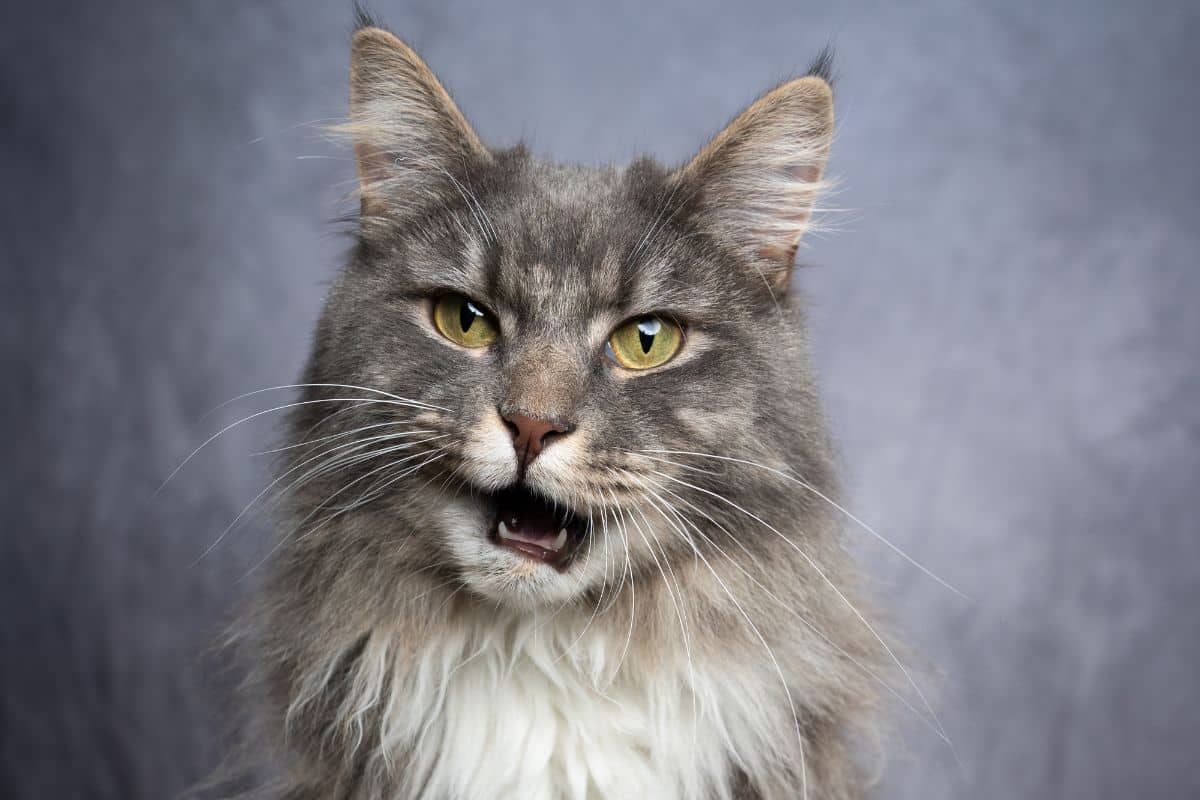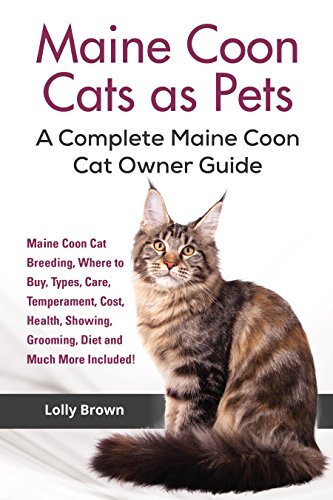Your Maine Coon may be shedding excessively due to seasonal changes or underlying health issues. Proper grooming and diet can influence shedding levels.
Maine Coons are known for their thick, luxurious coats that require regular maintenance. While it’s normal for these cats to shed, sometimes the shedding can seem overwhelming for pet owners. One common reason for increased shedding in Maine Coons is the change in seasons, particularly during spring when they lose their heavy winter undercoat.
Similarly, factors such as inadequate nutrition, stress, allergies, or health conditions can lead to abnormal shedding. As a Maine Coon owner, it’s essential to monitor shedding patterns and ensure your cat is receiving proper care, including a balanced diet and regular grooming, to manage shedding effectively. Understanding the reasons behind excessive shedding is the first step in keeping your furry friend healthy and your home fur-free.

Credit: meowa.com
The Majestic Maine Coon
The Maine Coon, known for its grandeur, captivates hearts with its impressive size. This breed stands out in the feline world. Its luxurious fur requires care. Shedding can surprise new owners. Let’s explore why these gentle giants shed and what patterns to expect.
Characteristics Of The Breed
Maine Coons boast unique traits:
- Size: They are one of the largest domesticated cats.
- Fur: Their coat is thick and water-repellent.
- Tail: Their tails are long and bushy, often resembling plumes.
- Ears: They have distinctive tufted ears.
- Personality: They are friendly and intelligent.
Maine Coons require regular grooming to maintain their coat’s health.
Typical Shedding Patterns
Understanding a Maine Coon’s shedding is essential:
- They shed moderately throughout the year.
- Seasonal changes trigger more intense shedding.
- Grooming reduces the amount of hair shed.
- Shedding can indicate diet or health issues.
Regular checks will help keep shedding under control.

Credit: kritterkommunity.com
Investigating Excessive Shedding
Maine Coons are beloved for their luxurious fur and playful personalities. Yet, some owners find clusters of hair around their homes. Let’s dive into why your Maine Coon may be shedding more than usual. A few checks can clarify if the shedding is normal or a sign of something else.
Signs And Symptoms
Excessive shedding can be concerning, especially if it’s new. Look for these signs:
- Fur clumps bigger than usual
- Fur on furniture, clothes, and floors
- Bald patches on your Maine Coon
- Your cat grooming more often
Common Triggers
Several factors can cause your Maine Coon to shed a lot. These include:
| Diet Changes | New foods or lack of nutrients |
|---|---|
| Seasons | Shedding more in spring and fall |
| Stress | Moving or changes in the home |
| Health Issues | Parasites, allergies, or skin conditions |
Each trigger can impact your Maine Coon differently. Notice more shedding in spring or fall? It might be seasonal. New bald spots or constant licking? Time to visit the vet. Your fluffy friend deserves the best care. Understand their shedding to keep them happy and healthy.
Health Concerns Linked To Shedding
Noticing your Maine Coon’s fluffy coat thinning out unexpectedly? Excessive shedding can be a sign of health issues. Let’s explore some common medical reasons behind your feline friend’s increased hair loss.
Nutritional Deficiencies
A well-balanced diet is crucial for your Maine Coon’s coat health. Inadequate nutrition can lead to excessive shedding. Watch out for these signs of nutritional deficiencies:
- Brittle Fur: Indicates lack of essential fatty acids.
- Dull Coat: Often a sign of insufficient protein or vitamins.
- Hair Loss: Could signal a mineral shortage, like zinc.
To tackle nutritional shortfalls, consider these remedies:
| Deficiency | Solution |
|---|---|
| Omegas | Add fish oil supplements. |
| Protein | Ensure a high-quality meat-based diet. |
| Vitamins & Minerals | Discuss specialized cat vitamins with your vet. |
Underlying Medical Conditions
Shedding may hint at hidden health issues. Pay attention to additional symptoms that accompany hair loss:
- Skin Infections: Are there sores or bald spots?
- Parasites: Look for flea dirt or tiny bugs in the fur.
- Hormonal Imbalances: Can cause uneven shedding patterns.
- Stress: Behavioral changes may lead to over-grooming.
If these signs are present, a prompt vet visit is critical. Early detection leads to effective treatment. Outline your concerns and seek professional advice to ensure your Maine Coon’s optimal health.
Seasonal Variations In Coat
Welcome to our deep-dive section on ‘Seasonal Variations in Coat’ concerning your majestic Maine Coon. It’s normal to see some changes in your pet’s fur throughout the year. Let’s unravel the mystery behind their seasonal shedding and what to expect.
Weather Influence
As the seasons turn, so does the volume of your Maine Coon’s coat. Warm summers often signal the shedding of the dense undercoat that has kept your cat snug during winter. In contrast, cooler seasons kickstart a growth spurt for their fur, preparing them for the cold.
Adaptation To Climate
Maine Coons have coats that are a marvel of nature’s design. Their fur’s density and length adjust to climate conditions, keeping them comfortable outdoors. This innate ability to adapt contributes to noticeable shedding as they prepare their magnificent coats for new weather ahead.
Understanding these patterns can help you manage your Maine Coon’s grooming routine more efficiently. Here’s a quick summary:
- Spring: Expect more shedding as they lose the winter coat.
- Summer: Lighter coat, but still some shedding.
- Fall: Coat thickens, less shedding seen.
- Winter: Full coat on, minimal shedding.
Remember, regular grooming can help minimize the impact of shedding—more on that topic in a future section. Stay tuned to keep your Maine Coon looking their best year-round!
Proper Grooming Techniques
Maine Coons are renowned for their luxurious fur. This striking feature requires proper care to maintain a healthy sheen and minimize shedding. Understanding the right grooming techniques can make a world of difference. Let’s dive into the proper grooming practices that can help manage your Maine Coon’s shedding effectively.
Brushing And Combing
Gentle, regular brushing is key. It keeps your Maine Coon’s coat tangle-free and reduces excess hair. Aim for daily brushing sessions with the right tools:
- Wide-toothed comb: Detangles without pulling.
- Slicker brush: Removes loose fur and smoothens the coat.
Start with the comb to gently work through any knots. Follow with the slicker brush to capture loose strands. Always be gentle to avoid hurting your fluffy friend.
Bathing And Skin Care
Bathing helps reduce shedding by removing loose fur. A monthly bath with a cat-friendly shampoo is often enough:
- Use lukewarm water.
- Apply pet shampoo made for cats.
- Rinse thoroughly to prevent residue buildup.
- Pat dry with a towel.
Care for your Maine Coon’s skin. It supports a healthy coat. Supplement their diet with omega-3 fatty acids for skin health.
Preventative Measures And Solutions
If your majestic Maine Coon is leaving little furry reminders all over the house, it’s time to tackle the shedding. Understanding the right preventative measures and solutions can help keep your feline’s fluff under control, ensuring a happier home for both you and your pet.
Dietary Adjustments
Better nutrition often equals less shedding. Ensure your Maine Coon’s diet is rich in omega-3 and omega-6 fatty acids. These promote healthier skin and a glossier coat. Supplements, like fish oil, can also work wonders.
Environmental Modifications
Your cat’s environment plays a crucial role in their shedding. Keeping your Maine Coon indoors reduces exposure to extreme weather, which can affect their coat. Regular grooming sessions are also essential. Brush your cat several times a week to remove loose hair and prevent tangles.
- Air filters reduce allergens and dust.
- Cool, humid air helps prevent dry skin.
When To Seek Veterinary Care
It’s normal for Maine Coons to shed, especially seasonally. But excessive shedding may signal a health issue. Unusual hair loss, bald spots, or changes in the coat’s texture call for a vet visit. Skin infections, allergies, or underlying health problems could be the cause.
| Signs to Watch | Action to Take |
|---|---|
| Bald patches | Consult your vet promptly |
| Change in coat texture | Seek dietary advice |
| Excessive scratching | Check for parasites |

Credit: medium.com
Frequently Asked Questions On Why Is My Maine Coon Shedding So Much
How Do I Stop My Maine Coon From Shedding?
Regular brushing helps reduce shedding in Maine Coons. Maintain a balanced diet and consider supplements for skin and coat health. Keep your Maine Coon hydrated and consult a vet for persistent shedding issues.
Why Is My Maine Coon Losing So Much Hair?
Your Maine Coon may be losing hair due to seasonal shedding, poor nutrition, stress, skin conditions, or underlying health issues. Regular grooming and veterinary check-ups can help manage this problem.
How Often Should You Bathe Your Maine Coon?
Bathe your Maine Coon once every 4 to 6 weeks. Regular grooming maintains their coat’s health without over-bathing.
Why Is My Maine Coon Pulling His Fur Out?
Your Maine Coon may pull its fur out due to stress, allergies, parasites, skin conditions, or anxiety. A vet visit is crucial to determine the cause and treatment.
Conclusion
Shedding in Maine Coons can be surprising, but it’s part of their natural cycle. Regular grooming and a proper diet can help manage their luxurious fur. With these tips, both you and your feline friend will enjoy a healthier, happier coexistence.
Remember, a shedding Maine Coon is a healthy one!



